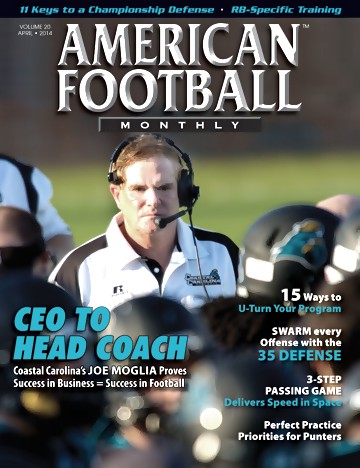AMERICAN FOOTBALL MONTHLY THE #1 RESOURCE FOR FOOTBALL COACHES
Article CategoriesAFM Magazine
|
ESTABLISHING A QUICK-PACED OFFENSE IN MIDDLE SCHOOL FOOTBALLby: C. Gordon Davis,Teacher and Coach, Conestoga High School (PA) © More from this issue Aside from scoring, the ability to control the clock and the tempo of a football game is the primary objective of any offense. For years, the pattern was to pound the ball slowly and chew up the clock to control a game and defeat an opponent. Yet, with the advent of the spread offense, the speed of play calling and substitutions has quickened, allowing coaches to better manage the tempo and get more offensive scoring opportunities. Adopting a quick-paced, quasi-huddle at the mi....The full article can only be seen by subscribers.
|
|
|||||||
| HOME |
MAGAZINE |
SUBSCRIBE | ONLINE COLUMNISTS | COACHING VIDEOS |
Copyright 2025, AmericanFootballMonthly.com
All Rights Reserved





